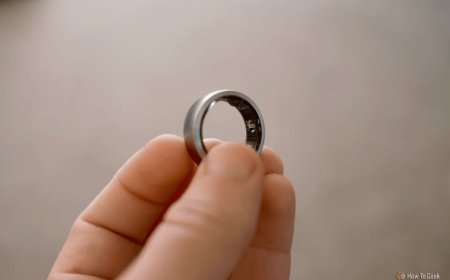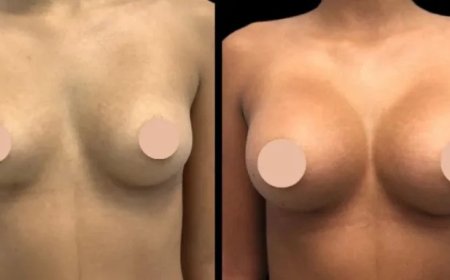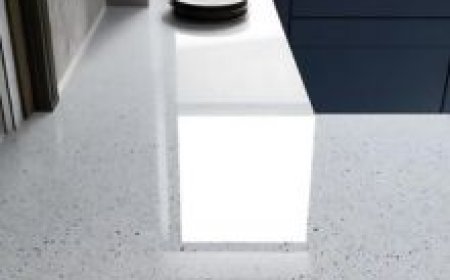Why Doctors Are Turning to Amniotic Tissue Allografts for Skin Substitute Solutions
Discover why amniotic tissue allografts are emerging as a top skin substitute in modern wound care. Explore benefits, use cases, and clinical advantages.

In the evolving field of wound care and tissue regeneration, physicians are constantly seeking innovative ways to improve healing times, reduce complications, and enhance patient outcomes. One solution thats gaining significant traction is the use of amniotic tissue allografts as a skin substitute. Once considered cutting-edge, this biologic product is now becoming a go-to option for many healthcare providers managing chronic wounds, burns, ulcers, and surgical sites.
But what makes amniotic tissue allografts stand out as a reliable skin substitute? In this article, well explore why more doctors are integrating these grafts into their clinical protocols and how patients benefit from their unique healing properties.
Understanding Skin Substitutes
A skin substitute is any materialbiologic or syntheticdesigned to replace or support damaged or missing skin layers. These materials act as scaffolds, encouraging cell migration and tissue regeneration while offering protection from infection and environmental exposure.
There are various types of skin substitutes available, including:
-
Synthetic options like silicone-based films or hydrogel sheets
-
Biologic substitutes such as xenografts (from animals), autografts (from the patient), and allografts (from human donors)
Among the biologic options, amniotic tissue allografts are gaining attention for their regenerative potential, ease of use, and strong safety profile.
What Are Amniotic Tissue Allografts?
Amniotic tissue allografts are derived from the amniotic membranethe innermost layer of the placenta. This tissue is rich in growth factors, cytokines, collagen, and extracellular matrix proteins. It also contains anti-inflammatory and antimicrobial properties, which are essential for wound healing.
These grafts are typically harvested from donated placentas during elective cesarean sections, following stringent medical screening and sterilization procedures. The resulting grafts can be cryopreserved or dehydrated for clinical use.
Why Amniotic Tissue Allografts Are Ideal as Skin Substitutes
1. Promote Natural Healing
Amniotic membranes create a biologic scaffold that supports tissue regeneration. Their structure mimics the natural skin matrix, enabling cells to migrate, proliferate, and differentiate more effectively. This accelerates the wound healing process while minimizing scarring.
As a skin substitute, amniotic tissue offers a more natural healing environment than synthetic alternatives.
2. Reduce Inflammation and Pain
Chronic wounds often remain unhealed due to prolonged inflammation. Amniotic tissue allograft have anti-inflammatory properties that help shift the wound environment from an inflammatory phase to a regenerative one. Patients often report reduced pain at the wound site after application, an important factor in long-term care and recovery.
3. Minimize the Risk of Rejection
Since amniotic tissue lacks blood vessels and has low immunogenicity, the risk of rejection or immune response is significantly reduced. This makes it a safe option for a wide range of patients, including those with complicated medical histories or autoimmune conditions.
Doctors appreciate the ability to use amniotic tissue allografts without the need for extensive immunosuppression or matching.
4. Antimicrobial and Antiscarring Properties
Infection is a leading complication in wound care. The antimicrobial properties of the amniotic membrane add an extra layer of protection against bacteria and other pathogens. Additionally, these grafts can help reduce excessive scar formation by modulating fibroblast activity and collagen deposition.
When used as a skin substitute, this dual role of infection control and scar reduction enhances the overall success of the treatment.
5. Versatile Clinical Applications
Amniotic tissue allografts are used in a wide range of clinical settings, including:
-
Chronic wounds (e.g., diabetic foot ulcers, pressure sores)
-
Burns and skin abrasions
-
Surgical incisions and donor sites
-
Ophthalmic procedures
-
Plastic and reconstructive surgeries
Their flexibility and ease of application make them a valuable tool in both outpatient and surgical settings.
What Doctors Are Saying
More healthcare providers are adopting amniotic tissue allograft due to their strong clinical outcomes and patient satisfaction. Studies show improved healing rates and fewer complications compared to traditional wound care methods.
Physicians also note that the reduced need for frequent dressing changes, thanks to longer graft adherence, can improve efficiency and reduce healthcare costs. As the demand for biologic wound care grows, amniotic tissue is seen as a cost-effective and clinically superior skin substitute.
Looking Ahead: The Future of Skin Substitutes
The demand for advanced wound care solutions continues to rise, particularly with the increasing prevalence of chronic conditions like diabetes and vascular disease. In this context, amniotic tissue allografts offer an exciting frontier.
Research is ongoing to further enhance the bioactivity of these grafts, including the use of stem cells, combination therapies, and 3D-printing techniques. As innovation progresses, the role of amniotic tissue in skin regeneration will only grow stronger.
Final Thoughts
For physicians seeking safe, effective, and biologically active skin substitutes, amniotic tissue allografts are proving to be an invaluable asset. Their natural healing properties, anti-inflammatory effects, and low immunogenic risk make them a preferred choice for modern wound care.
Whether used for chronic wounds, burns, or surgical recovery, amniotic tissue allografts are redefining whats possible in tissue repair. Its no surprise that more doctors are turning to these innovative products to help their patients heal faster, with fewer complications and better long-term outcomes.








































